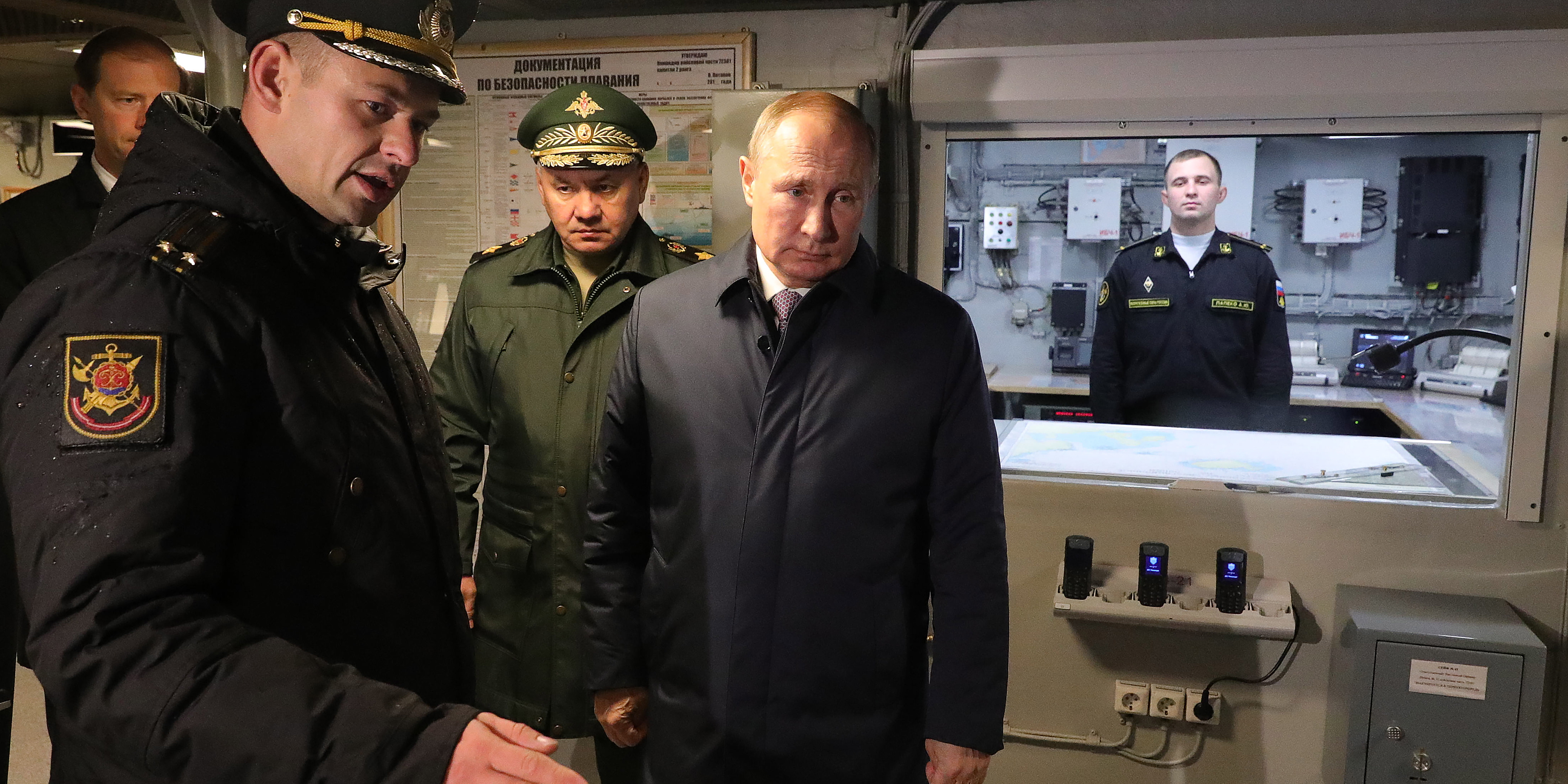- Russian President Vladimir Putin visited the Russian city of Kaliningrad last Thursday and told Defense Minister Sergei Shoyu that the new corvette Gremyashchi would carry the Zircon hypersonic missiles still being developed.
- According to Putin and Russian state media, the missile can reach speeds of Mach 9 and hit targets in the US in five minutes.
- The missiles could be deployed as soon as 2020.
- Visit Business Insider’s home page for more stories.
Russian President Vladimir Putin declared on Oct. 31 that the Zircon hypersonic cruise missile will “certainly” be onboard the Russian Navy’s newest corvette, set to enter service next month, according to RT. The Zircon, or Tsirkon, missile, while reportedly still under development, cannot be intercepted by any defense systems currently in use, according to Russian state media outlet TASS.
Putin toured the corvette Gremyashchi on a visit to the northwestern Russian city of Kaliningrad last Thursday. “It will certainly have Tsirkon,” Putin told Defense Minister Sergei Shoyu.
The Zircon missile reportedly travels at nine times the speed of sound; the term “hypersonic” is generally understood to mean an object travels at least five times the speed of sound. The missile was still under development as of February, when Russia-1, the state television station, threatened five US positions including the Pentagon, saying that the Zircon missile could hit the targets in less than five minutes.
Dmitry Stefanovich, Russian International Affairs Council expert and Vatfor project co-founder, told Insider that the corvettes “were not considered to be the priority platform for Tsirkons,” but that Russia believes its “advantage lies in a general idea that the Navy needs both surface and submarine combatants for different missions, and those have to be armed to the hilt.”
Also in February, Putin claimed in his Address to the Federal Assembly that the missile's development was progressing according to schedule.
Putin used the missile to threaten the US should it deploy any new nuclear missiles closer to Russia as the INF treaty began to unravel in February.
"You work it out: Mach nine, and over 1,000 km," Putin told Russian media at the time, Reuters reported.
While the claims of Russian state media and Russian leadership are impossible to verify, Putin has said that the Zircon can destroy both sea and land targets.
"Some people tend to 'overhype' Tsirkon's capabilities, others try hard to downplay its importance, as both in the US and in Russia experts have their own agenda," Stefanovich told Insider.
"My personal belief is that when this weapon will finally be deployed, it will not be as impressive as most people expect it to be, but still the speed would be unmatched, and Mach 8 at least on most of the flight seems feasible." As for range, Stefanovich said the missile would likely only be able to reach the maximum range of 1,000 km if it didn't have to evade missile defense systems - otherwise, a range of 400 to 800 km would be more realistic.
That is less than the range of the Tomahawk cruise missile the US uses for land-attack missions, but much farther than the Harpoon and Naval Strike Missiles used by the US Navy to strike enemy ships.
The Zircon is compatible with the Kalibr missile systems, which are already aboard the Gremyashchiy corvette, according to the Center for Strategic International Studies' Missile Threat project. TASS reports that the Gremyashchiy is the first corvette in the Pacific Fleet to carry the Kalibr missiles.
And while it's not been officially reported that the Zircon is nuclear capable, "the conventional penetrating high-explosive warhead is good enough to sink or destroy most of the targets, but the general belief is that most Russian missiles are dual-capable," with a payload of about 300 kg, Stefanovich told Insider.
According to the Federation of American Scientists, the Zircon could potentially be deployed next year.

